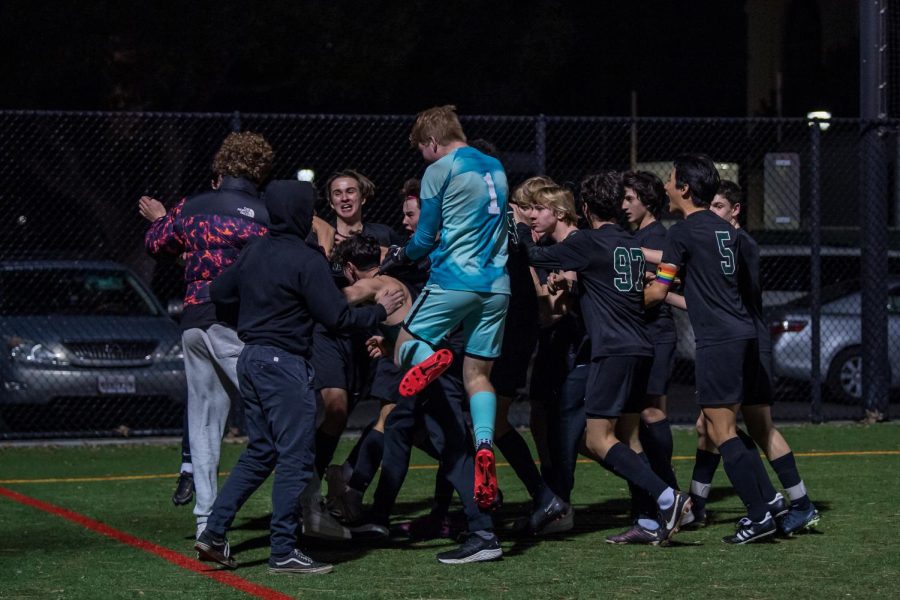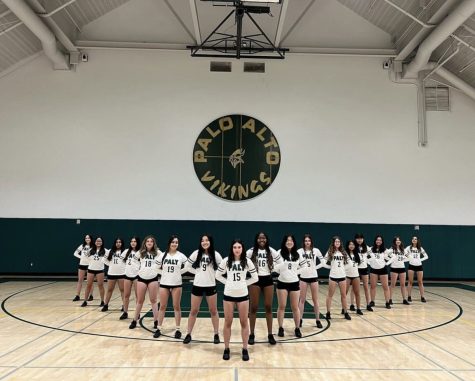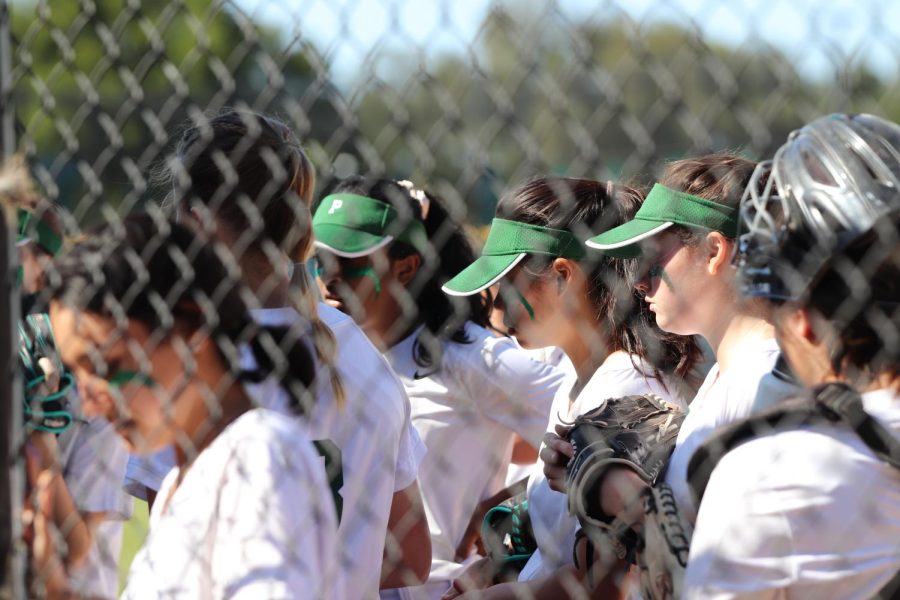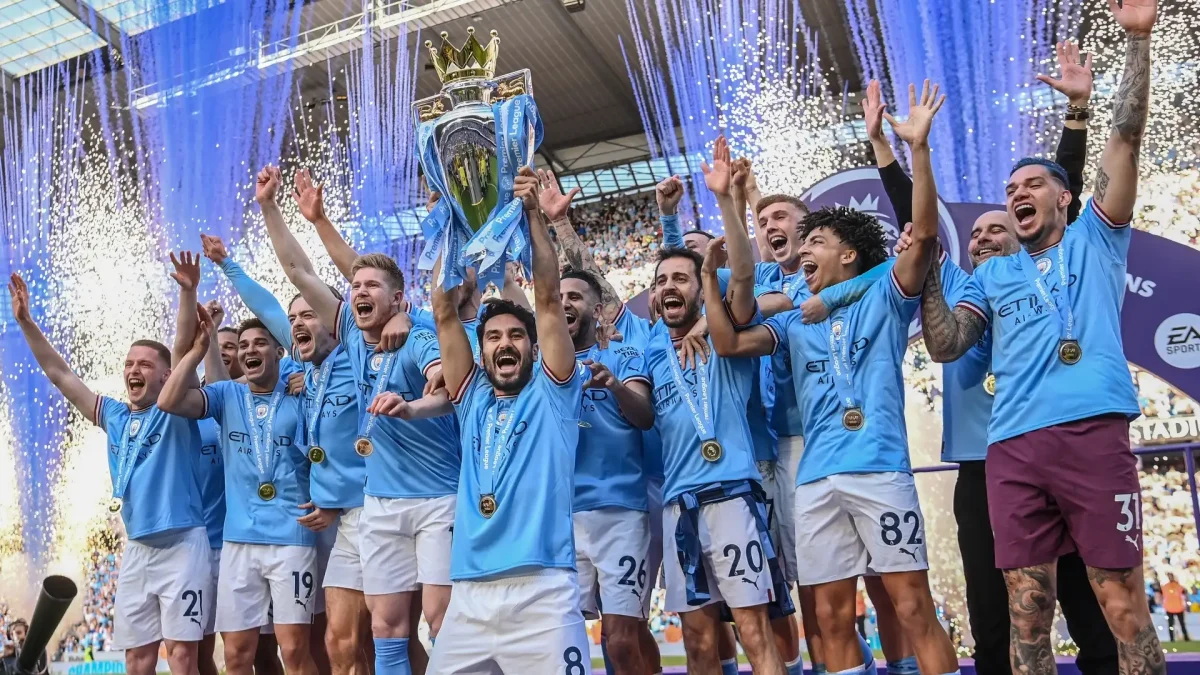The Final Word: Competition Conundrum
May 19, 2023
Athletics should be competitive, but should you compete with your teammates?
Known as ‘intra-team competition,’ competing with teammates can walk a fine line between lifting people up and bringing them down. Uplifting when it drives each athlete to be better. Degrading when it becomes extreme and degrades. In individual sports where solo performance is the norm, it can make people want their teammates to do poorly because of the fiercely competitive desire to beat them. Similarly, in team sports, when two players are competing for one spot on the starting line or for playing time. So how can coaches and athletes encourage healthy competition and mitigate toxic competition?
In this edition of final word, I talked to a pair of soccer players, and compiled their experiences with my own experiences on cross country and track, to find some answers to this question.
Merkel and Kirby have known each other since sixth grade and have been playing soccer together since they were freshmen. They are both keepers (or goalies), which means they often have separate sessions during practice with only each other to work on goalie drills. They explicitly go “head to head” with one another for playing time.
This situation would seem to be a breeding ground for toxic competition but instead they feel like playing together makes them better athletes and people.
“I like the competition during practice,” Kirby said. “It definitely pushes me to be better; I find in club I have zero competition because [I’m] the only goalie.”
Merkel agrees that the competition helps him improve. He also notes that despite having a fellow goalie with him at his club practices, it isn’t the same as training with Kirby.
“I do club and have a teammate with me [which] is also good,” Merkel said. “But I haven’t known [the club teammate] as long as I’ve known Isaac [Kirby].”
Along with being friends since middle school and having classes together, Merkel and Kirby have attended hundreds of practices together and gone through thousands of repetitions of drills, bringing them even closer together.
“We got to the point where we could just say a word and trade off instantly [in drills],” Merkel said. “We always felt good about supporting each other.”
Merkel attributes this positive competition in part to their long history together but also because of clear communication between them, as well as between the players and their coach. Rusty, the soccer coach, was explicit with them in advance about who would get playing time, explaining the when and the why. This left no room for speculation and erased any potential for resentment by following logic instead of ambiguous arbitration.
“We’re very clear about who’s starting, who’s not starting and how it’s looking,” Merkel said. “For instance, I had vacation during winter break and [Kirby] didn’t. [He] kept on grinding. So when I came back, [he] was getting the bulk of [the playing time] because [he] was still fresh and I had to work back.”
Kirby, while seconding the importance of communication, notes most importantly that toxic competition was negligible because they were both working towards the same goal: the team victory.
“Team is all,” Kirby said. “‘Eleven makes one [the eleven players on the field make one team in a soccer game].”
I agree with Kirby and Merkel’s perspectives. In my experience in individual sports, a “team first” mentally has been the primary factor in helping to prevent negative competition. Sounds ironic, right? How can you have a “team-first” mentality in an individual sport? Here’s how.
For the past four years, I have had the pleasure of being able to train and compete with fellow senior Hillary Studdert. Since freshman year, Studdert and I have been competitive. This was almost always a positive thing. I looked forward to daily workouts where she and I could push each other to the max. For races, we both certainly ran faster because the other one was next to us, matching pace stride for stride. Studdert feels the same way.
“We are both very different people yet get along seamlessly,” Studdert said. “Having two elite athletes on a team together can cause a lot of toxicity and conflict but it only makes us better, which I am endlessly grateful for”
And, like I said, it was easiest for this competition to be positive when we had a team-first mentality. For me, this made cross country inherently easier than track because it is more team based (where each player’s place converts to a score and the sum of the scores determines the winner). For example, even though I personally didn’t have the best race my freshman year CCS, Studdert finished with an excellent time and place. Because this lifted up the team and made us better there was no toxic resentment or jealousy. Our individual accomplishments (or lack thereof, in my case) didn’t really matter because we had both helped the team to the CCS victory –– the team accomplishment. Similarly, our senior year, sophomore Kinga Czajkowska, Studdert, and I finished fifth, sixth, and seventh in the State Championship race. It was a good race but not my best. I had been hoping to get a PR (personal record) and I had been a little off. Despite this, I was thrilled. I had finished my last high school cross country race running literally between two teammates; we managed to have three runners in the top ten, and finished fourth in the state. It was one of the best state finishes in the history of Paly women’s cross country. And none of us would have been able to accomplish that alone. Studdert agrees, noting that with running especially having a teammate there for the hard moments is special.
“Running can be a really difficult sport mentally,” Studdert said. “Bad days are inevitable and you can’t blend in or hide behind others. I think Elizabeth and I learn from each other and get inspired by each other on these sort of days when the other had an outstanding performance.”
In track, a similar team-oriented mentality exists in relays. In a relay, everyone is working towards the goal of winning for the team. You want your teammate to run as fast as they can, faster than their fastest PR, because it will make the team faster. Studdert notes that these team-first times make the sport memorable and special.
“Running can have a really self-centered aspect about it— constantly chasing your best times and places, but a relay completely changes this,” Studdert said. “With your teammates you are able to run for each other and celebrate a collective victory which is more special.”
This year we are lucky enough to have four fast distance runners (aforementioned Czajkowska, Studdert, and I, along with freshman phenom Amaya Bharadwaj), enough to field the coveted Distance Medley Relay (DMR) which consists of a 1200, 800, 400, 1600. The second weekend of April we raced in Arcadia, in LA, at one of the fastest high school track invitationals in the country. I raced the first leg, the 1200m. I felt okay and it went okay. It wasn’t, however, a spectacular race. But it didn’t have to be; I had done my job of giving our 800 runner, Bharadwaj, good placement going into her leg.
Instead of being bummed about my race, I spent the next nine minutes screaming my lungs out cheering for my teammates, urging them to go faster, faster, faster. The faster they went, the faster the team went. We ended up placing second, breaking the previous school record by over 30 seconds and only one of two teams at the meet to break the 12-minute barrier. Again, like our cross country races, this would not have been possible with only one person; we are each the sum of our individual parts. Studdert also highlights the relay as an important race for herself and the team.
“The DMR race at Arcadia was super special,” Studdert said. “I had just raced an individual event, but knew how important it was to come back and give it all for my team, and I couldn’t be prouder of how we all raced for each other.”
In this way, I have found it is easier to have positive intra-team competition and attitudes when everyone is working together as a team. Of course, that means that the inverse is true: when the sport becomes too much about college recruiting, money, or just losing sight of the love for the sport, intrateam competition can become toxic.
Kirby and Merkel second this idea, noting that even in ultra-unified team sports like soccer this can happen when money is a part of it, which often happens professionally.
“If you’re at a higher level and getting paid millions of dollars, of course you’re gonna be competing with the people next to you,” Merkel said.
Both soccer players also note that if they had been trying to get recruited, tensions may have been higher between them. Instead, though they were doing it “just for kicks,” and able to keep the competition between themselves positive and helpful.
These ideas parallel my experiences with running very closely. I have found that the sport became less about the team and more about myself namely during the collegiate recruiting process or when I was injured.
The collegiate recruiting process can often make intra team competition negative or harmful by making the sport more about individual achievementbecause it focuses on how you look to recruiters, especially compared to your teammates. When I was going through the process, I became overly focused on my own running and my own times, losing touch with what the sport meant and what made it fun. I lost sight of the vital team-first element and mentality, instead wanting to run fast just “for the schools,” and “for the times.”
In a similar way, when I was injured, it was easy to let resentment or anger build up. It is hard to sit on the sidelines watching teammates do what you want to be doing but can’t. This anger can also be directed into the sport itself, making athletes lose sight of why they love it.
In my years of running, I have dealt with numerous injuries, some small and some bigger. As terrible as they were, and as terrible as injuries continue to be (I am struggling with one right now), they can provide the opportunity to work on positive, uplifting competition instead of negative attitude, and help you fall in love with the sport all over again by starting from scratch, way at the basics.
My most severe injury happened amid the recruiting process during my junior year track season. It forced me to take a step back from the obsession with times and getting recruited. It was hard that year to be positive about the runners around me, but I do think that I came out of it a more humble, aware, person who is grateful to be able to simply move my body, grateful to be able to run.
In the end, I would assert, and I think Kirby and Merkel would second, that intra team competition is overwhelmingly positive. It can push us to be better and further our enjoyment of the sport. It does depend, however, on the mentality of the athlete in the sport. We need to make sure that we love whichever sport it is that we are doing. We should love it for the freedom it brings, the escape it provides, the friendships it forms. While other reasons like victory or success can (and probably should) be part of athletics, it shouldn’t be all of it, and to keep it a healthy experience, it should really be the second priority behind growing as a friend and athlete.
Beyond that, to ensure that intra-team competition remains positive, we should encourage communication, healthy relationships outside of the sport, and a focus on team-first mentality. Like Kirby said, and my experiences emphasize, “eleven playing as one” is far more powerful than one trying to play as eleven. Your team is there for you; use them. I know I have.








